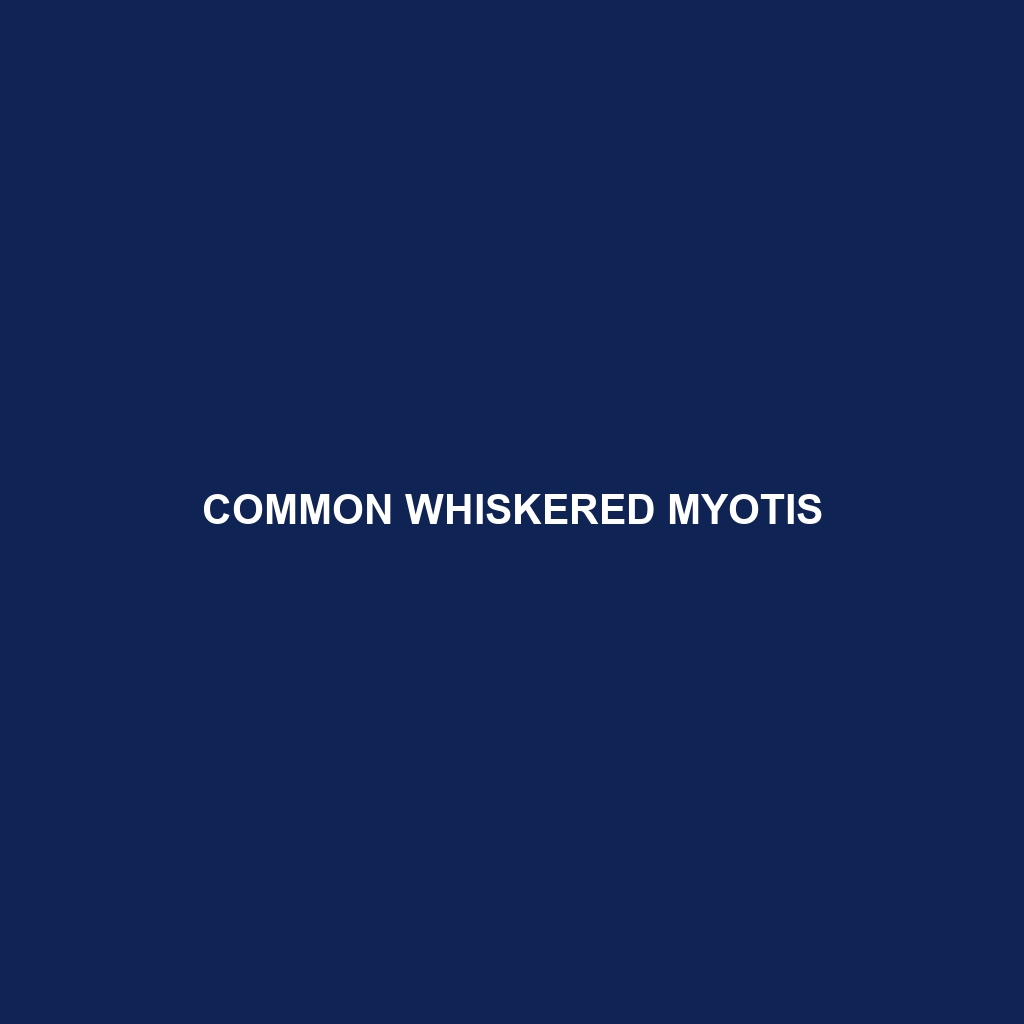Common Whiskered Myotis
Common Name: Common Whiskered Myotis
Scientific Name:
Habitat
The Common Whiskered Myotis is primarily found in various regions of Europe and parts of Asia. Typically inhabiting forests, grasslands, and urban areas, this species prefers environments with abundant roosting sites, such as tree cavities, buildings, and caves. These bats are often discovered in temperate climates, thriving in areas with a mix of woodland and open landscapes, which provide ample foraging grounds.
Physical Characteristics
The Common Whiskered Myotis generally measures between 6 to 10 centimeters in body length, with a wingspan ranging from 25 to 30 centimeters. Its fur is characterized by a dark brown to grayish color, often with lighter underparts. One of its distinctive features is the elongated, pointed ears and the presence of long whiskers, which enhance its sensory perception. The bat’s unique wing shape allows for agile flight maneuvers, crucial for catching insects during foraging.
Behavior
This species exhibits nocturnal behavior, primarily hunting at dusk and dawn. The Common Whiskered Myotis is known for its agile flying capabilities, allowing it to navigate through complex environments while detecting prey. Socially, they often roost in groups, which helps with communication and warmth. During the colder months, these bats may hibernate in similar roosting sites, conserving energy until warmer weather returns.
Diet
The diet of the Common Whiskered Myotis primarily consists of small insects, including flies, beetles, and moths. They are skillful hunters and often utilize echolocation to locate prey in the darkness. By consuming large quantities of insects, this bat plays a critical role in natural pest control, which is beneficial for both ecosystems and agricultural practices.
Reproduction
Breeding typically occurs in late spring or early summer, with females giving birth to one or two pups each season. After a gestation period of approximately 6 to 7 weeks, mothers invest significant time in nurturing their young, teaching them to fly and forage. Maternity roosts are often established in secluded areas to provide safety for the pups.
Conservation Status
Currently, the Common Whiskered Myotis is classified as “Least Concern” on the IUCN Red List. However, habitat destruction and climate change pose ongoing threats to their populations. Conservation efforts are essential to monitor these trends and ensure the stability of their habitats to prevent future shifts to a more vulnerable status.
Interesting Facts
– The Common Whiskered Myotis is known to participate in swarming behavior before hibernation, congregating in large numbers during this period.
– Their ability to consume up to 600 insects in one hour significantly contributes to their ecosystems.
Role in Ecosystem
The Common Whiskered Myotis plays a vital role in the ecosystem as both a predator and prey. By controlling insect populations, they help maintain balance within various ecosystems. Furthermore, they serve as a food source for various birds of prey and other predators, highlighting their importance in the food web.
